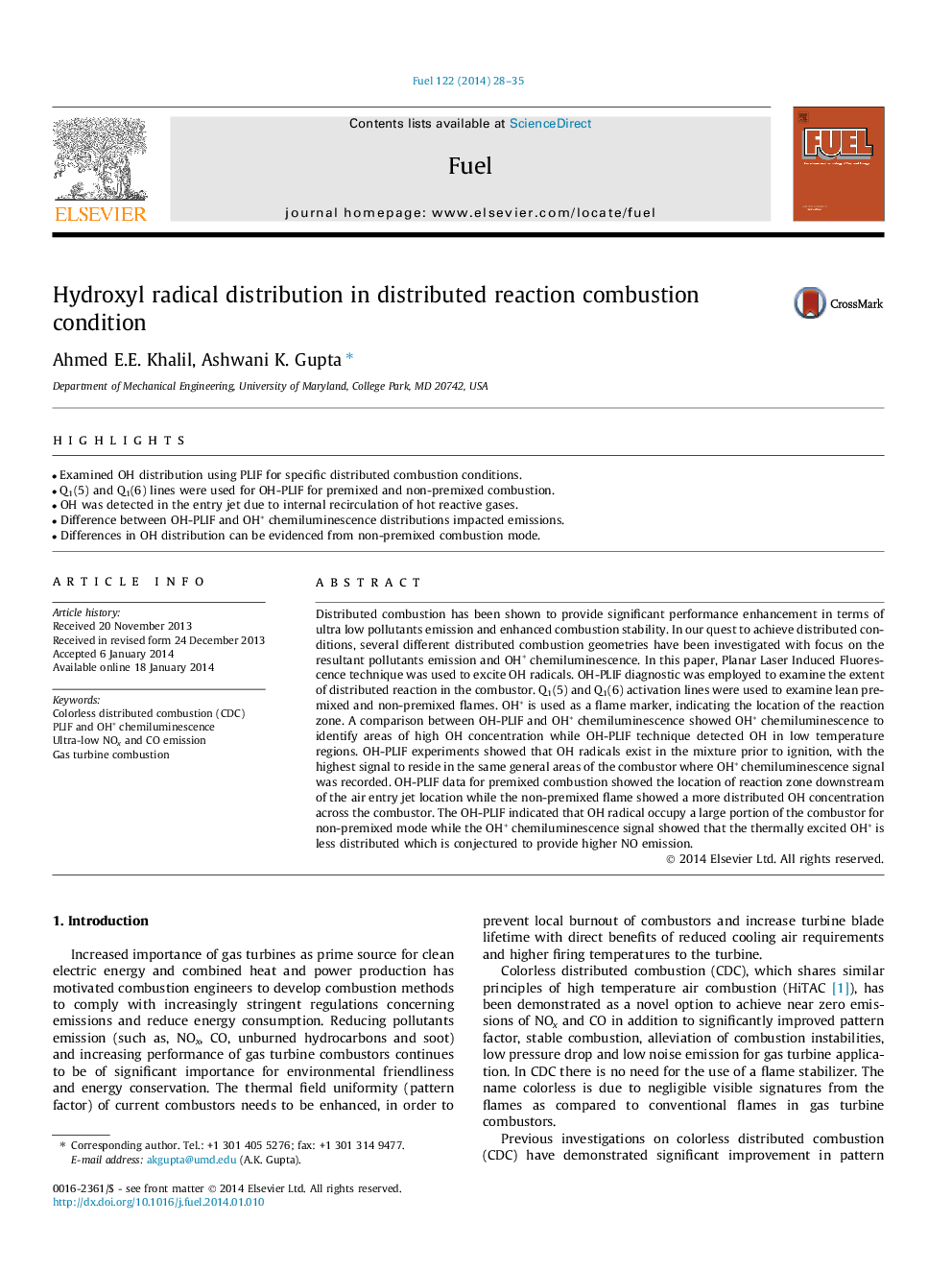| کد مقاله | کد نشریه | سال انتشار | مقاله انگلیسی | نسخه تمام متن |
|---|---|---|---|---|
| 206117 | 461142 | 2014 | 8 صفحه PDF | دانلود رایگان |
• Examined OH distribution using PLIF for specific distributed combustion conditions.
• Q1(5) and Q1(6) lines were used for OH-PLIF for premixed and non-premixed combustion.
• OH was detected in the entry jet due to internal recirculation of hot reactive gases.
• Difference between OH-PLIF and OH* chemiluminescence distributions impacted emissions.
• Differences in OH distribution can be evidenced from non-premixed combustion mode.
Distributed combustion has been shown to provide significant performance enhancement in terms of ultra low pollutants emission and enhanced combustion stability. In our quest to achieve distributed conditions, several different distributed combustion geometries have been investigated with focus on the resultant pollutants emission and OH* chemiluminescence. In this paper, Planar Laser Induced Fluorescence technique was used to excite OH radicals. OH-PLIF diagnostic was employed to examine the extent of distributed reaction in the combustor. Q1(5) and Q1(6) activation lines were used to examine lean premixed and non-premixed flames. OH* is used as a flame marker, indicating the location of the reaction zone. A comparison between OH-PLIF and OH* chemiluminescence showed OH* chemiluminescence to identify areas of high OH concentration while OH-PLIF technique detected OH in low temperature regions. OH-PLIF experiments showed that OH radicals exist in the mixture prior to ignition, with the highest signal to reside in the same general areas of the combustor where OH* chemiluminescence signal was recorded. OH-PLIF data for premixed combustion showed the location of reaction zone downstream of the air entry jet location while the non-premixed flame showed a more distributed OH concentration across the combustor. The OH-PLIF indicated that OH radical occupy a large portion of the combustor for non-premixed mode while the OH* chemiluminescence signal showed that the thermally excited OH* is less distributed which is conjectured to provide higher NO emission.
Journal: Fuel - Volume 122, 15 April 2014, Pages 28–35
